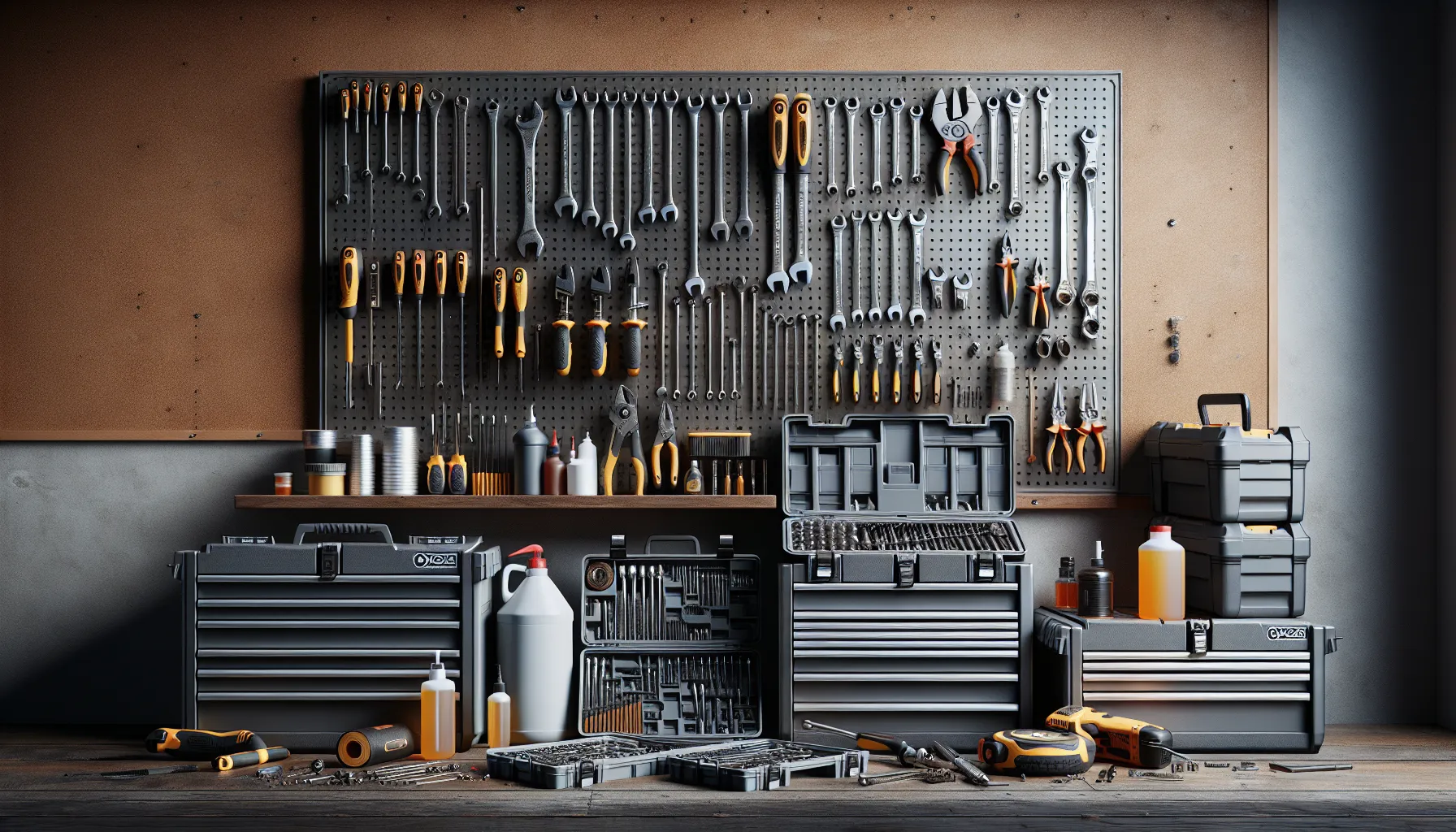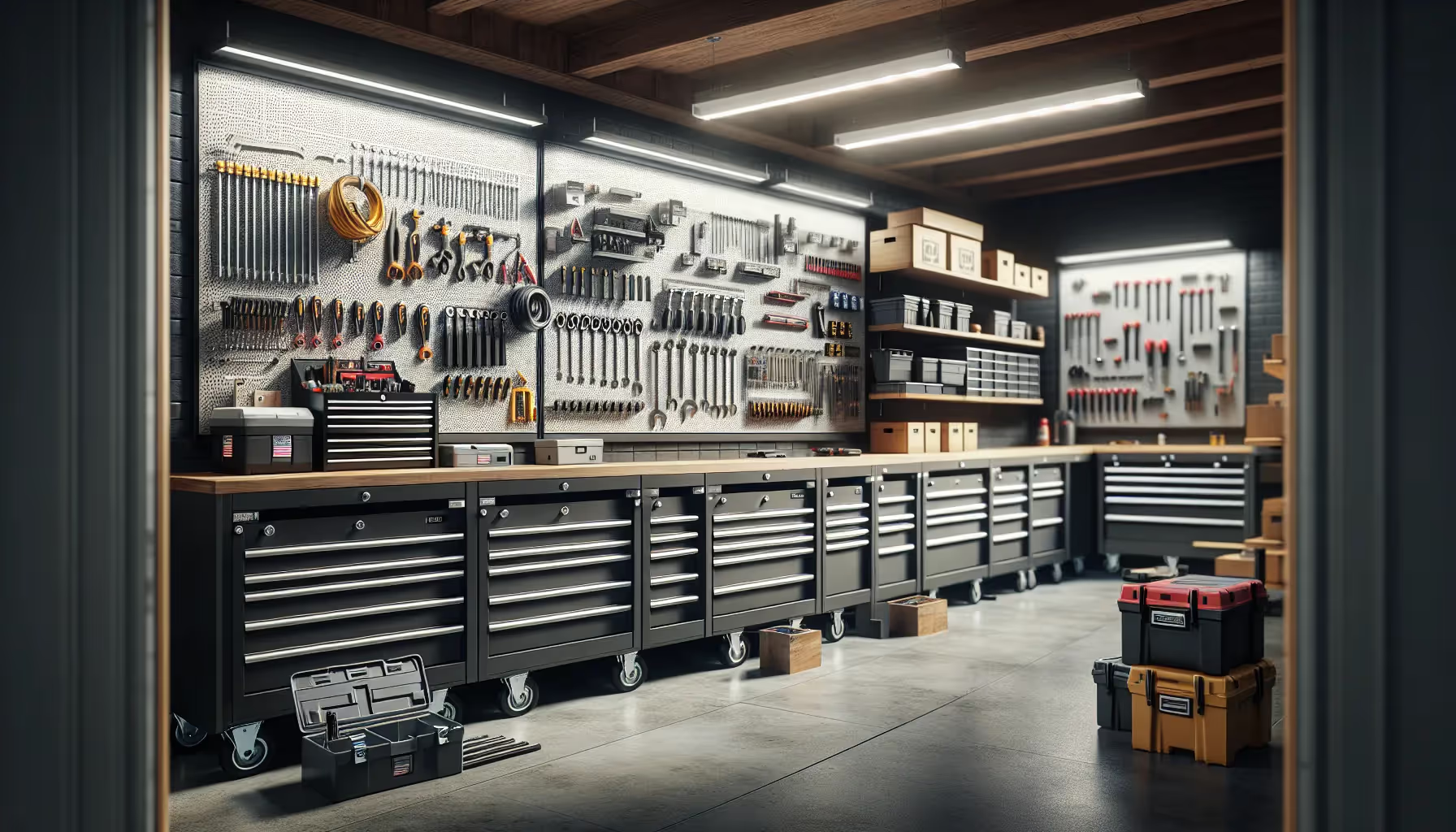Key Takeaways
- Safety Enhancement: Proper tool storage reduces the likelihood of workplace accidents, addressing the 30% of incidents caused by improper handling.
- Increased Efficiency: An organized tool system saves time and improves workflow, allowing easier access to tools when needed.
- Tool Longevity: Appropriate storage prevents wear and tear, protecting tools from rust and damage, thus extending their lifespan.
- Professional Image: A tidy and well-organized tool area reflects professionalism and commitment to quality, boosting confidence among clients and team members.
- Effective Transportation: Secure loading and balanced weight distribution during tool transport minimize risks of damage and accidents.
- Common Pitfalls: Avoid mistakes like storing dirty tools or transporting them loosely, which can lead to safety hazards and inefficiency.
In today's fast-paced work environment, keeping tools organized and safe is crucial for efficiency. Did you know that 30% of workplace injuries stem from improper tool handling? By mastering best practices for storing and transporting tools, we can significantly reduce risks and enhance productivity.
Whether we’re on a job site or in a workshop, the way we manage our tools directly impacts our workflow. With the right strategies in place, we can ensure that our tools are not only secure but also easily accessible when we need them. Let’s explore how effective storage and transportation methods can transform our work experience and keep us safe on the job.
Importance of Tool Storage and Transportation
Proper tool storage and transportation play a vital role in enhancing safety and organization in any work environment. By keeping tools organized, we reduce trip hazards and the potential for injuries, which, as noted, contribute to about 30% of workplace accidents. A well-planned storage system helps us locate our tools quickly, improving workflow and ensuring that tasks are completed efficiently.
Here are key reasons why effective tool storage and transportation matter:
- Safety First: Storing tools properly minimizes accidents. Sharp objects can cause injuries if left strewn about. We all know the feeling of stepping on a rogue nail or tripping over a misplaced wrench. Keeping our tools in designated spots reduces the risk of these mishaps.
- Increased Efficiency: Efficiently organized tools can save time on the job. Think of how much time we spend searching for that one specific tool hidden under a pile of equipment. Having a dedicated storage area means less time searching and more time doing what we do best. Using field service management software can also help track which tools are in use or need maintenance.
- Tool Longevity: Proper storage protects our tools from wear and tear. Wet or humid conditions can rust tools, while improper handling can lead to damage. Storing them in appropriate cases or containers keeps them in top condition and extends their lifespan.
- Professionalism: Well-organized tools reflect our commitment to quality. A clean workspace instills confidence in clients and team members. It shows we value our work and take pride in our tasks.
Think about the last time you transported tools. Did everything arrive safely? Using secured storage bins or tool bags, especially when using job scheduling software for technicians, can reduce risks of spills or damage during transport.
We can adopt mobile workforce management strategies that offer automated solutions for keeping our tools organized on jobsites. For example, updating our stock list through a mobile field service app right after unloading tools can help prevent that pesky problem of running out of the right tool at the wrong time.
What methods do we use for transporting tools? Have we ever faced challenges with tools not arriving in one piece? Sharing experiences can help us improve our techniques collectively.
Adopting practices like technician route optimization can also enhance our transportation efficiency. When we plan our routes effectively, we spend less time on the road, leading to quicker job completions and happier clients.
Overall, putting thought into our tool storage and transport strategies means we foster a safer, more productive workplace. This commitment not only boosts our performance but strengthens our community's work ethic. Think about how we might improve our current practices. Engaging in conversations and sharing tips with fellow workers can lead to new ideas and solutions that benefit us all.
Best Practices for Storing Tools

Storing tools properly plays a vital role in maintaining a safe and organized workspace. By following best practices, we can create an efficient environment that enhances productivity and minimizes accidents.
Organizing Tool Storage Areas
Organizing tool storage areas leads to improved safety and efficiency. We categorize tools by type—like screwdrivers and wrenches—and frequency of use. Placing often-used tools in accessible locations saves time.
Utilizing vertical space helps maximize storage capacity. Wall-mounted cabinets or shelves elevate tools, reducing clutter on the workbench. Implementing the 5S method—Sort, Set in Order, Shine, Standardize, Sustain—provides a structured approach to maintaining order. Clearly labeling storage areas guides every user to the right tools quickly. Who doesn't like the satisfaction of finding things on the first try?
Choosing the Right Storage Solutions
Selecting the right storage solutions simplifies tool access and enhances security. We assess our workspace constraints and determine whether tools need portability. Portable toolboxes can offer flexibility for mobile tasks.
Prioritizing safety features is crucial. We look for storage that secures sharp objects, such as sheaths or specialized cases. Breaches in tool safety can lead to injuries. Also, considering security requirements is key. Choosing lockable storage prevents theft and unauthorized access—protection for our valuable equipment.
Best Practices for Transporting Tools

Transporting tools requires attention to safety and organization. Adopting proper practices enhances our workflow and minimizes risks.
Safety Considerations During Transport
Securely loading tools prevents them from shifting during transport. We recommend using straps or tie-downs to keep everything in place. Utilizing protective coverings or cases helps shield tools from damage and the elements. Weight distribution matters too. A balanced load maintains vehicle stability, reducing the chances of accidents.
Regular safety checks keep everything in good shape. Inspect tools and vehicles before hitting the road. This ensures that everything’s secure and functioning correctly. Personal Protective Equipment (PPE), like gloves and safety glasses, should be part of our gear when handling tools. Simple habits like these can prevent injuries and promote a safer work environment.
Choosing Suitable Transportation Methods
Selecting the right vehicle simplifies tool transport. Vehicles must offer adequate space and tie-down points for easy loading and unloading. Plus, organizing tools logically—by type or frequency of use—enhances our efficiency. Clear labeling on containers allows us to identify contents quickly without digging through every box.
Using service dispatch software or mobile workforce management tools helps streamline our processes. These technologies allow us to plan routes effectively, saving time during transport. An efficient system means more time spent on the task at hand and less time worrying about logistics.
We thrive as a community by sharing these tools and techniques. What strategies do you find helpful in keeping your transported tools safe and organized?
Common Mistakes to Avoid

We often overlook some common mistakes in tool storage and transportation that can lead to safety hazards and disorganization. Awareness of these pitfalls improves our practices and enhances work efficiency.
- Storing Dirty or Wet Tools: Tools left dirty or wet promote rust and corrosion. This can lead to contamination and degrade tool lifespan. Always clean and dry tools prior to storage.
- Placing Tools on Floors or in Damp Areas: Tools should never rest directly on floors or in damp spaces. This practice invites rust and physical damage. Use shelves, pegboards, or shadowboards for proper tool placement.
- Ignoring Color-Coding Systems: Color-coding helps with quick identification and return of tools. Neglecting this method results in confusion and disorganization. Implement a color-coding system to facilitate efficiency.
- Overstacking Heavy Tools: Overstacking leads to tipping hazards and potential damage. Distribute weight evenly in storage, and place heavier items on lower shelves to maintain stability.
- Neglecting Regular Inspections: Failing to regularly check tools can result in unnoticed deterioration or pest damage. Schedule periodic inspections to identify issues early, ensuring tools remain in good condition.
- Transporting Tools Loosely: Transporting tools in an unorganized manner can lead to damage or injury. Use sturdy toolboxes with compartments to secure tools during transport, preventing unnecessary shifts and impacts.
- Overloading Containers: Overloaded toolboxes or cases can shift during transport, increasing the risk of injury. We must balance weight distribution and avoid stacking incompatible items.
Tips for Maintaining Tool Organization

Maintaining tool organization creates a safer and more efficient workspace. Implementing a few best practices helps us keep our tools neat and accessible.
- Use the Right Storage Solutions: We can use wall-mounted racks, pegboards, and tool chests to keep tools secure and within reach. Portable toolboxes and lockable cabinets provide added security. Choosing the right storage helps prevent tools from being misplaced or damaged.
- Maximize Vertical Space: Installing shelves or pegboards allows us to take advantage of unused walls. Heavy tools should sit on lower shelves to keep them easy to reach and maintain stability. This maximizes our workspace and reduces clutter.
- Color-Code Tools: By color-coding tools or utilizing shadowboards, we can quickly identify items. Matching colors makes it easier for us and our team to return tools to their designated spots. This practice cuts down on time spent searching for misplaced tools.
- Maintain Cleanliness: Cleaning tools before storage prevents cross-contamination. It also extends the life of tools and helps maintain a hygienic workspace. Regularly inspecting tools for rust and dirt keeps everything in working order.
- Document Storage Processes: Including our tool storage procedures in safety plans helps everyone stay on the same page. This documentation highlights our cleaning, sanitation, and organization practices. It also ensures compliance with safety standards.
- Prioritize Safe Storage: We should always store tools in dry, dust-free areas. This helps prevent rust and corrosion, ensuring tools remain useful and safe. Using protective cases for sharp tools reduces the risk of injuries.
- Secure Tools During Transport: Using portable toolboxes keeps tools organized during transport. We should always ensure tools are secured in their cases to prevent movement that could lead to accidents.
By following these simple guidelines, we contribute to a culture of safety and efficiency in our workplace. Staying organized helps us work smarter, not harder. Engaging with each other about best practices keeps our skills sharp and our workspace tidy.
What tools do you find hardest to keep organized? Share your challenges with us! Together, we can find solutions to keep our tools in tip-top shape.
Conclusion
By prioritizing the safe storage and transportation of our tools we can create a more efficient and organized work environment. Implementing best practices not only minimizes the risk of accidents but also enhances our overall productivity.
As we adopt these strategies we foster a culture of safety and professionalism that benefits everyone. Let’s commit to keeping our tools in top condition and our workspaces organized.
Together we can share our experiences and challenges in tool management to continuously improve our practices. A safer workspace is just a few adjustments away.
Frequently Asked Questions
Why is tool organization important in the workplace?
Proper tool organization enhances efficiency and safety, reducing the risk of injuries that account for 30% of workplace accidents. An organized workspace minimizes trip hazards, improves workflow, and makes tools easily accessible, ultimately boosting productivity.
What are the best practices for storing tools?
To effectively store tools, categorize them by type and frequency of use, utilize vertical space for maximum storage, and adopt the 5S method for maintaining order. Choose secure storage solutions, such as portable toolboxes and lockable storage, to keep tools safe from theft and damage.
How can tools be transported safely?
For safe transportation of tools, load them securely and use protective coverings. Ensure balanced weight distribution for vehicle stability and conduct regular safety checks. Utilizing Personal Protective Equipment (PPE) during transport is also crucial to prevent injuries.
What are common mistakes in tool storage and transportation?
Common mistakes include storing dirty or wet tools, placing them on floors, neglecting inspections, and transporting tools loosely. Overstacking heavy tools and ignoring color-coding systems can also create hazards and lead to disorganization in the workplace.
How can tool organization contribute to a safer work environment?
Effective tool organization helps minimize accidents by reducing hazards and keeps the workplace tidy. By ensuring tools are stored properly and securely transported, workers create a safer atmosphere that encourages collaboration and promotes safety best practices.






